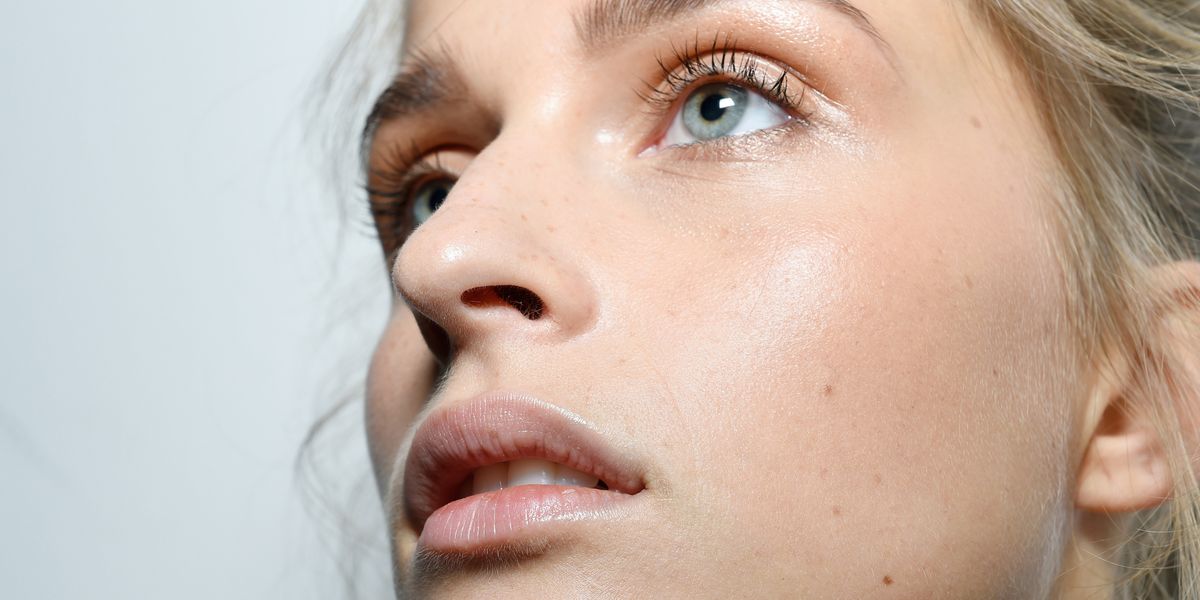Confession: As much as I wanted to define myself as a chill, zen-like bride-to-be, there was something about my looming engagement photos in New Mexico that sent me into a certifiable tailspin.
The week before, I found myself researching (and booking) a flurry of services that I’d previously never considered. We’ll now refer to this as marathon beauty week. Teeth-bleaching? Done. Eyebrow threading and tinting? Scheduled. Baby Botox tune-up? Double-check! HydraFacial? Why the hell not?! I was game for anything that would ensure my eternal status as a dewy, glowing fiancé on Instagram—and beyond.
While I’d previously had HydraDermabrasion during a facial at Joanna Vargas in Los Angeles, I’d never *actually* experienced a full HydraFacial. I opted to try one at Haven Spa in New York City to test one out. According my esthetician Marta Camkiran (who has 21 years of skincare experience under her belt), the HydraFacial at Haven is a combination of acids— glycolic, beta, lactic, salicylic and hyaluronic. “It’s as effective as microdermabrasion, but it’s not painful and there’s no downtime to recover,” she explained to me.
Apparently this magical 30- to 60-minute treatment would tackle everything from dehydration to discoloration, aging to acne, and uneven skin texture. Ready to book? Honestly same. But here’s a brief explainer on everything to know before your first HydraFacial—including my first-hand experience.
What is a HydraFacial?
According to board-certified cosmetic dermatologist, Dr. Ariel Ostad, “the HydraFacial is the only hydra-dermabrasion procedure that uses patented technology to cleanse, extract, and hydrate.” And yes, HydraFacial is a branded experience. Spas have to be registered and licensed to market themselves as offering HydraFacials.
My 60-minute treatment would be divided into three key sections, the first being Cleanse + Peel. “HydraFacial uncovers a new layer of skin with gentle exfoliation and relaxing resurfacing. The Activ-4™ serum removes dead skin cells to reveal healthy skin and the GlySal™, a mixture of glycolic and salicylic acids, delivers the benefits of a peel without post-peel scaling,” he explains.
The second step is to Extract + Hydrate. The HydraFacial removes debris from pores with painless suction and nourishes with intense moisturizers that quench skin. “The patented, automated vortex suction painlessly cleans out pores with the exclusive Beta-HD™ serum and Antiox+™ serum nourishes and protects with antioxidants, peptides, and hyaluronic acid,” Ostad continues.
And finally, the third step is to Fuse + Protect. “A HydraFacial saturates the skin’s surface with antioxidants and peptides to maximize your glow. Targeted, proprietary skin solutions are delivered to address specific skin concerns. Patients maintain results at home with Daily Essentials™ featuring the same ingredients used in the treatments,” he adds.
How does a HydraFacial differ from microdermabrasion or a traditional chemical facial peel?
There are a few key differences. For example, microdermabrasion treatments use manual extractions, while a HydraFacial uses a vacuum-like tip to cleanse deeper down than a traditional extraction. That’s also much less painful. Additionally, chemical peels use acids and are most effective on lighter skin tones, whereas HydraFacials can be used on all shades.
“[The treatment] takes its name from the root word hydrate—this ability to moisturize the skin separates the HydraFacial™ from all other skin resurfacing procedures,”explains Boston-based, board-certified dermatopathologist Dr. Gretchen Frieling. “The treatment is soothing, refreshing, non-irritating and immediately effective.”
Do HydraFacials hurt?
Good question and the answer TBH, is not really? Essentially, the machine’s hand-piece holds spiralized treatment tips with vortex technology which, as I’ve mentioned acts like a mini vacuum on your skin. The most uncomfortable part of the treatment is definitely the exfoliation in section one. Camkiran likened the feeling to a “cat licking my face.” That’s a cute way of saying it was sandpapery but not excruciating.
Despite the official website’s claim that “patients compare the sensation to a light massage,” I would say it’s a bit more like a dental cleansing for your skin (and p.s. I love the dentist). Somewhere between not painful and not pleasant lies the HydraFacial. However, this is an *active* facial meaning…in the words of another prominent beauty editor, Deanna Pai: “The HydraFacial device is a huge machine with various attachments that whirr and suck and spin.” In summary, it’s noisy—and if you fall asleep during this treatment you are on a different level of zen that I 100 percent envy.
Is it safe for all skin types?
HydraFacials can be performed on most skin types, including very sensitive complexions. “The treatment is highly customizable,” explains Ostad. “Your skincare professional will work with you to understand your unique skin concerns, and will recommend a personalized treatment for you.” An aesthetician can use the exfoliator at varying intensities, and leave acids on the face for differing durations.
But, those with active rashes, sunburns, or rosacea should abstain from HydraFacials, which can cause further damage or flare ups. “Also, some of the ingredients used during the HydraFacial, such as salicylic acid, haven’t been tested or proven safe during pregnancy,” adds Frieling.
How many treatments do I need to see results?
“Many patients report seeing visible skin refinement and an even, radiant skin tone after just one treatment,” explains Frieling. And yes, I co-sign this. My skin has receipts. 60-minutes and change later I emerged a glow-ier, dewier version of myself that lasted into the latter half of the week.
The good news? The smooth results and hydration may last five to seven days or even longer. The bad news? One treatment per month is recommended for improving the appearance of fine lines, wrinkles, brown spots, oily and congested skin…which ain’t cheap people!
How much do HydraFacials cost?
With a price tag ranging from $199-$300, it’s certainly an investment. I’d likely book a treatment again before a big event (like my wedding) or quarterly to reset my skin after a seasonal change. But if you have the bread, ball out because your skin will look lovely. Interested in booking one? Find a certified HydraFacial practitioner on the official website.


